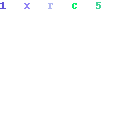This past year we saw a rise in the cost of almost everything. Insurance is no exception. It is not something any of us want to skimp on, but there are ways to lower our premiums without under insuring our most important assets.
Raise your deductible as high as you can. The higher your deductible, the more money you can save on your premiums. Take it anywhere from a $250 deductible to a $2,500 deductible. With the money, you will save monthly, place it in a savings account until you reach the amount of your deductible. Keep it in the account collecting interest until you need it.
I shop around every two to three years for a better quote with at least 3 companies—comparing apples to apples. Combining all your insurance needs (auto and home) with one company will help lower your rates. Ask about all discounts they offer and make sure you take advantage of them. I am loyal to only those companies that are loyal to me and will offer me the best rates.

Ask your friends and family to recommend a good insurance company or check with the National Association of Insurance Commissioners (NAIC.org) for information on reliable insurance companies. Companies like A.M. Best (ambest.com) and Standard & Poor’s (standardandpoors.com) will rate the financial stability of these companies.
When shopping for a homeowner’s insurance, don’t include the value of the land underneath your house when deciding on the value. It will only raise your premiums unnecessarily. Ask about discounts for making your house disaster resistant as well as discounts for adding additional security to your home.
When shopping for car insurance, don’t forget about the discounts. Consider dropping collision/comprehensive coverage of your older cars. It is suggested that if your car is worth less than 10 times the premium, that coverage may not be warranted. Check with Kelley’s Blue Book for the value of your cars.
Educate yourself on all the different coverage types:
Liability–Liability insurance is designed to offer specific protection against third-party claims, i.e., payment is not typically made to the insured, but rather to someone suffering loss who is not a party to the insurance contract.
Full Coverage–Full coverage is the name commonly referred to as Comprehensive and Collision.
Comprehensive—Comprehensive coverage provides coverage, subject to a deductible, for an insured’s vehicle that is damaged by incidents that are not considered collisions. For example, fire, theft, vandalism, weather, or impacts with animals are types of comprehensive losses.
Collision–Collision coverage provides coverage for an insured’s vehicle that is involved in an accident, subject to a deductible. This coverage is designed to provide payments to repair the damaged vehicle, or payment of the cash value of the vehicle if it is not repairable. Collision coverage is optional, however, if you plan on financing a car or taking a car loan, the lender will usually insist you carry collision for the finance term or until your car is paid off.
Uninsured/Underinsured—Uninsured and underinsured provides coverage if an at-fault party either does not have insurance or does not have enough insurance.
Loss of Use–Also known as rental coverage, provides reimbursement for rental expenses associated with having an insured vehicle repaired due to a covered loss.
Loan Lease Payoff Coverage–also known as GAP coverage or GAP insurance, was established in the early 1980s to provide protection to consumers based upon buying and market trends.
Personal Property–Personal property coverage covers items in a vehicle that are damaged due to an accident that would not be covered under the auto policy. Any type of property that is not attached to the vehicle should be claimed under a homeowners or renters policy.
Towing–Car towing coverage is also known as Roadside Assistance coverage.
Requirements may vary from state to state.







